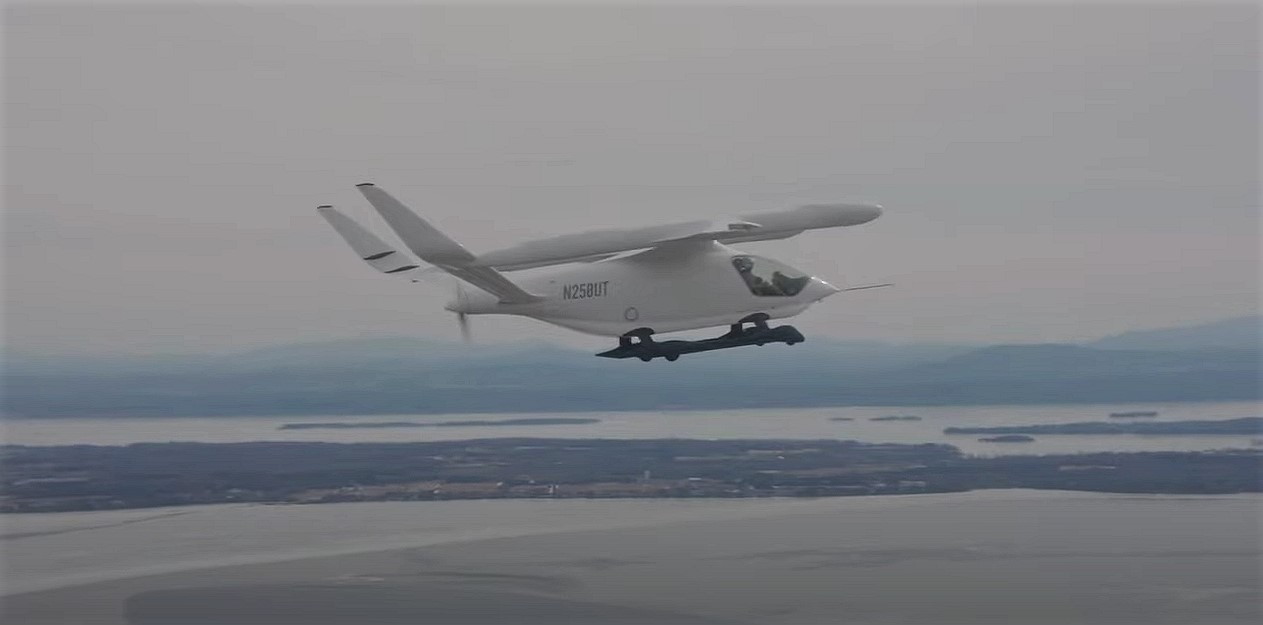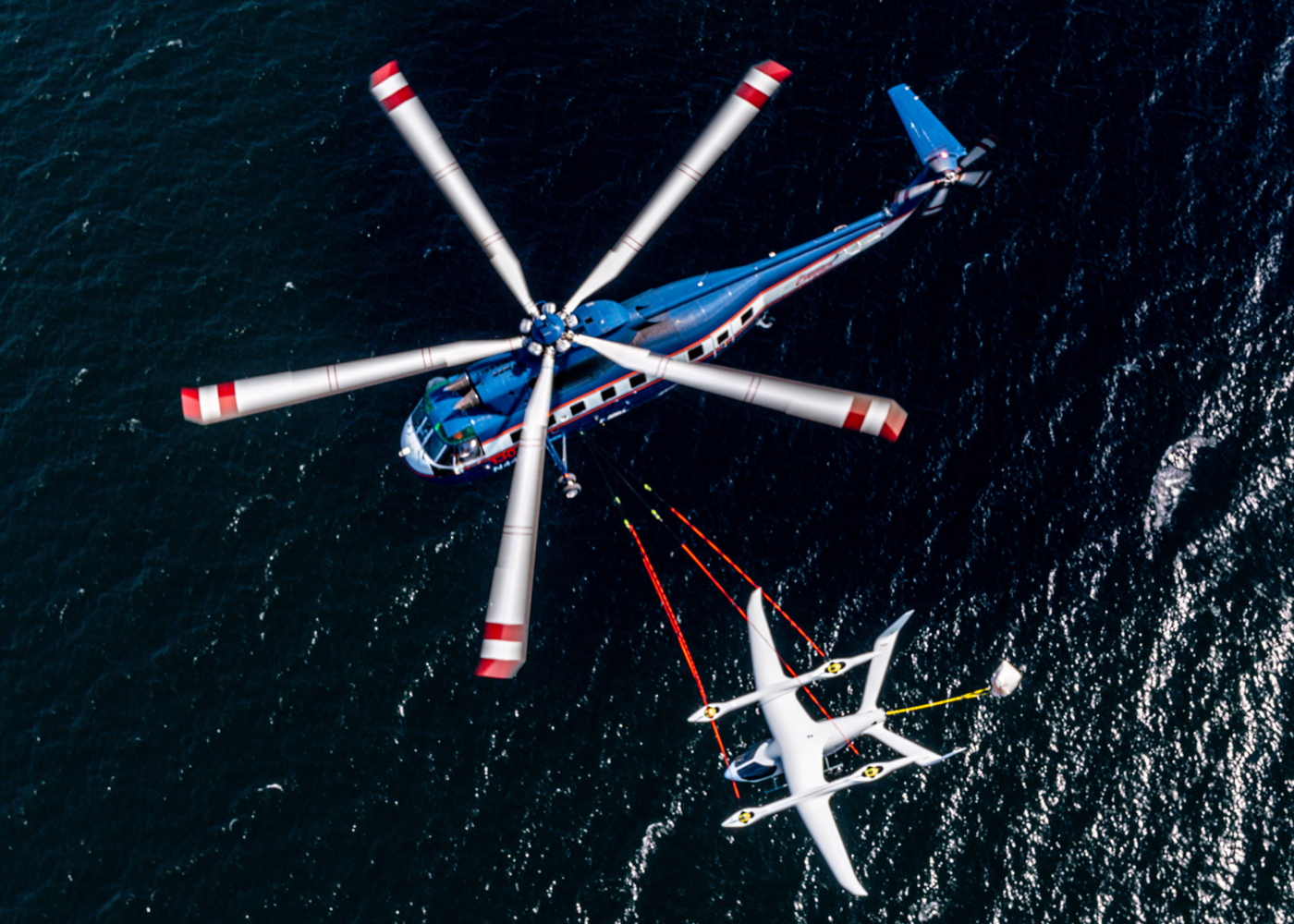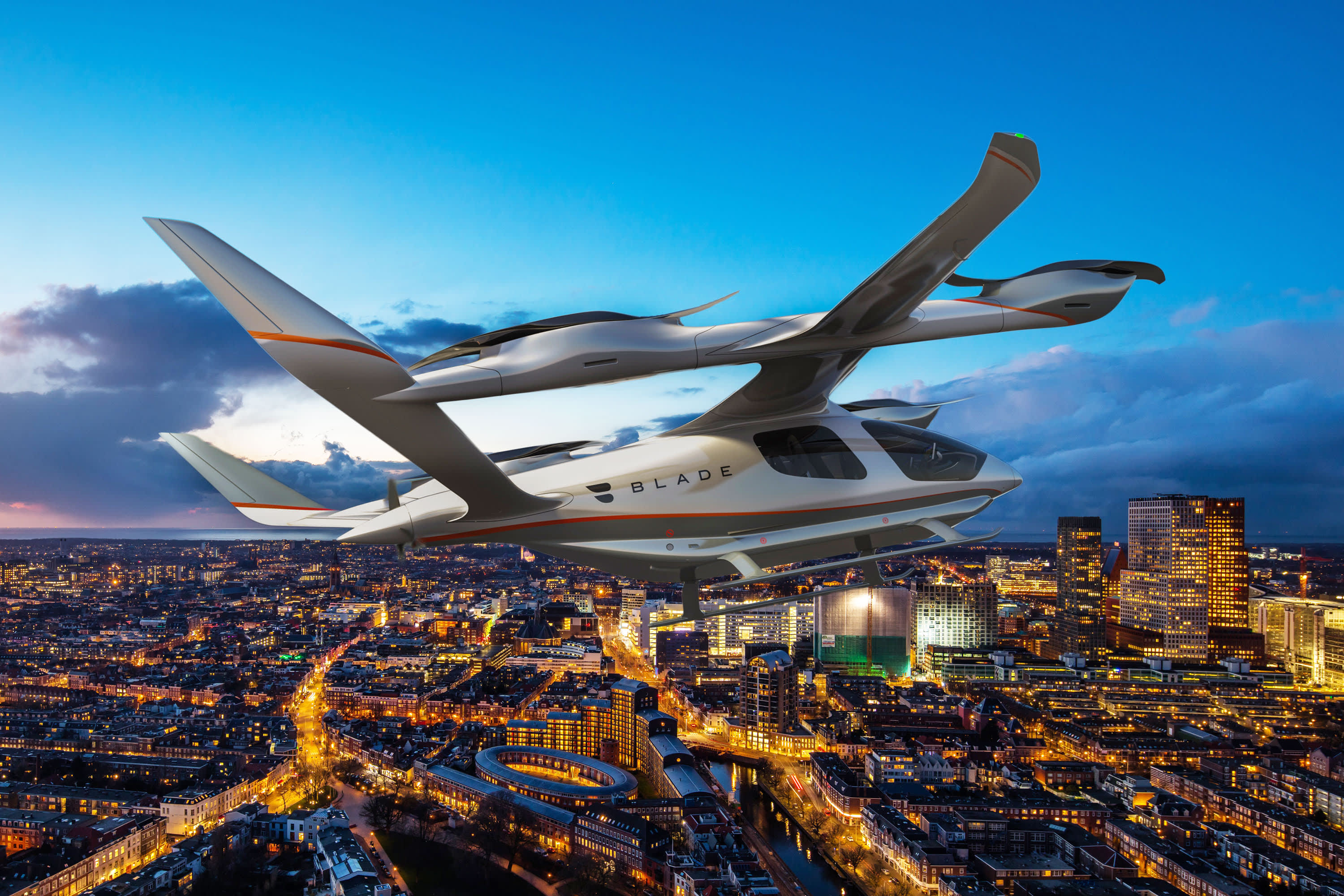Alia Electric Vertical Aircraft - After changing her mind and getting her pilot’s license through the employee program, however, Ms. Vu began competing in aerial acrobatic competitions. As an engineer, she said, flying helps her address safety concerns. “If I’m building this, would I fly it?” said Ms. Vu, who said she considered herself a conservative pilot, although, she admits, “I was kind of surprised how much I enjoyed flying upside down.”
“It was so fun to fly it that we found an excuse to every chance we could,” Mr. Clark told an audience at M.I.T. in 2019. Ultimately, though, it turned out to have too complex a design and Mr. Clark threw it out. He created a streamlined prototype modeled after the Arctic tern, a small, slow bird capable of flying uncanny distances without landing.
Alia Electric Vertical Aircraft

Kyle Clark flew alone for the first time in 1997 on a plane from Burlington to Erie, Pa. Mr. Clark, then 16, had just been selected by the U.S.A. Hockey national team. “I was the worst player on the ice,” he said, “so I decided to fight all the opposing players.” As a result, “the team named me captain.”
‘The Dna Of Vermont’
But it isn’t to the Internet that Beta owes its existence; it’s to the iconoclastic biotech entrepreneur Martine Rothblatt. After becoming wealthy from founding Sirius Satellite Radio, Rothblatt started a biotech, United Therapeutics, in 1996 to develop a treatment to save her daughter from a lung ailment. The drug worked, but at some point her daughter will still need a lung transplant. That motivated Rothblatt to make an audacious effort to solve the chronic shortfall in organs for transplantation: She’s developing artificial ones. Electric vertical takeoff and landing (eVTOL) aircraft are the perfect solution to quickly — and greenly — get the perishable organs to hospital helipads. She contracted with the helicopter company Piasecki to develop one to her specifications, but at a 2017 meeting with subcontractors, she says she was deeply impressed by Clark, whom Piasecki had hired to build the electric power systems.
In 2013, Ms. Rothblatt became interested in battery-powered aircraft. United Therapeutics makes human organs, including a kidney grown inside a pig that was attached to a person last fall, the first time such a procedure has been done. Ms. Rothblatt wanted an electric heli-plane “to deliver the organs we are manufacturing in a green way,” she said, and fly them a considerable distance — say, between two mid-Atlantic cities.
“Clean energy is built into the DNA of Vermont,” said Russ Scully, a Burlington entrepreneur who raised capital for Beta. Burlington is closer to becoming net zero than almost any municipality in the country; in the Beta parking lot, many cars have charging cables inserted.
Returning to Harvard after two years, for his senior project, Clark designed a flight control system for a single-person aircraft based on a motorcycle seat and handlebars. Failing to find investors to develop the plane, Clark started a business in 2005 building power supply equipment in his mother-in-law’s garage. In 2010, he sold that company to Dynapower, a Vermont power equipment manufacturer, and became its director of engineering, helping develop systems used in Tesla’s commercial energy storage offering, Powerpack.

Design And Features Of Alia-
United Therapeutics, an American biotechnology company involved in the development of artificial organs, is the launch customer of Alia-250. The company aims to use the aircraft for the distribution of human organs. Package delivery company United Parcel Service (UPS), along with its subsidiary UPS Flight Forward, reached an agreement to buy ten Alia-250 aircraft from Beta Technologies in March 2021, with an option to purchase up to 150 aircraft. The aircraft to be delivered to UPS will have a cargo payload capacity of 635kg, range of 402km and cruising speed of 274km/h. The first delivery of the Alia-250 aircraft is expected to take place in 2024.
“There were like 30 people in the room, none of whom excited me,” Ms. Rothblatt recalled. “Then Kyle stood up and said, ‘I’m an electronics and power systems person, and I’m confident we can achieve your specification with a demonstration flight within one to two years.’ Other people were shaking their head. He was probably the youngest guy in the room. So I came up to him during break and said, ‘Where’s your company located?’ And he said, ‘I live in Vermont.’”
He gives his 350 employees free lessons in Beta’s motley fleet of 20 airplanes and helicopters, including humdrum Cessna 172 trainers, an Extra aerobatic plane, a World War II Boeing-Stearman biplane and a 1940 Piper Cub.
The company is designing and building many of the components, including the motors, in its Burlington facility. “That enables us to completely customize the design to this application,” propulsion engineer Herman Wiegman told Wired. Wiegman designed energy storage systems for GE Global Research before joining Beta for its launch three years ago.
Alia- Propulsion And Performance
But regulatory risk is high. After all, the FAA has yet to certify even a conventional airplane with an electric propulsion system, let alone a vertical takeoff and landing one. Clark and Rothblatt’s conviction is that keeping the aircraft as simple as possible is key but it’s anyone’s guess as to how much time it will take the agency to assess Alia’s novel technology – or whether they’ll require modifications that sap its performance. Even Beta true believer Rothblatt, who flew Alia in June, is hedging her bets by backing the development of two simpler aircraft: a helicopter retrofitted with an electric propulsion system and a large drone from the Nasdaq-listed Chinese company EHang.
However, the Electro’s power supply lasts only about an hour. After ours nearly ran out, I wondered how many people would enjoy flying in an electric plane. That take off is fun. But then you do start to worry about the landing.

He grew up flying experimental planes on an organic farm in West Texas, aware of the limits on where a plane can land and who can fly. Looking at a floating sculpture twirling above a lake, he sees a different future for aviation: “Everyone a pilot, everywhere a runway.”
Late last year, curious about the potential of so-called green aviation, I flew in a Pipistrel Alpha Electro, a sleek new Slovenian two-seater designed for flight training. The Electro looks and flies like an ordinary light aircraft, but absent the roar of internal combustion, its single propeller makes a sound like beating wings. “Whoa!” I exclaimed when its high-torque engine caused it to practically leap off the runway.
The Alia was made by Beta Technologies, where Mr. Caputo is a flight instructor. A five-year-old start-up that is unusual in many respects, the company is the brainchild of Martine Rothblatt, the founder of Sirius XM and pharmaceutical company United Therapeutics, and Kyle Clark, a Harvard-trained engineer and former professional hockey player. It has a unique mission, focused on cargo rather than passengers. And despite raising a formidable treasure chest in capital, it is based in Burlington, Vt., population 45,000, roughly 2,500 miles from Silicon Valley.
Batteries are evaluated by two key metrics: specific energy, which is the amount of energy they contain for a given weight; and specific power, a measure of how much energy the battery can discharge at once for a given weight. In a recent paper, Viswanathan and Sripad estimated the pack-level specific energy requirements for five eVTOLs assuming an empty weight fraction of 0.5 (that’s the share of the maximum takeoff weight that’s taken up by the airframe, avionics and other onboard systems). The lower the empty weight fraction, i.e. the lighter the structure, the more room there is for batteries, meaning their specific energy doesn’t need to be as high. The bars to the sides of each square show how much the specific energy requirement varies at empty weight fractions between 0.45 to 0.55.
Despite the excitement about e-planes, the Federal Aviation Administration has never certified electric propulsion as safe for commercial use. Companies expect that to change in the coming years, but only gradually, as safety concerns are worked out. As that process occurs, new forms of aviation are likely to appear, planes never seen before outside of testing grounds. Those planes will have limitations as to how far and fast they can fly, but they will do things other planes can’t, like hover and take off from “runways in the sky.”
Beta’s Tom O’Leary told Robb Report that Alia’s wing shape, rotor design and propulsion have a more practical purpose that extends beyond aesthetics. “Our focus has been simplicity,” he says. “We want to make the aircraft as simple as possible to help achieve FAA certification.”

Black images of flying unicorns adorn windows at Beta’s headquarters at Burlington Airport. It’s not a joke about Beta’s status as a billion-dollar aircraft startup. The tail numbers on the two Alia prototypes are N250UT and 251UT, for United Therapeutics and Rothblatt’s stipulation of 250-mile range. When identifying the aircraft to air traffic controllers, the last two letters should be pronounced as “Uniform Tango” by aviation convention, but to annoy her husband when handling comms during flight tests, Katie Clark took to saying “Unicorn Tango.”
A new aircraft being built in Vermont has no need for jet fuel. It can take off and land without a runway. Amazon and the Air Force are both betting on it. So who will be in the cockpit?
“You get to tell by spending time with somebody face to face… who will smash down a wall to achieve success and who will just give you excuses,” says Rothblatt. “Kyle was equal to the best executive that I had ever worked with in my life before he'd done anything for me.”
Beta Technologies was established in 2017 with the aim of developing a battery-powered aircraft with vertical take-off and landing capabilities. It prepared the design of Alia-250 based on experience gained from successful test flights of Ava, its first manned prototype aircraft.
When he played minor league hockey in the early 2000s, Kyle Clark says his teammates would spend the long bus rides talking about the drugs they’d taken last night and who’d brought a hooker into their hotel room. Clark, a bruising 6-foot-6 enforcer, would bury his nose in textbooks on how to build airplanes. Pretty nerdy – but he’d even stood out as an engineering egghead at Harvard, where his hockey teammates nicknamed him Beta.
The air-cooled electric motors that propel Alia-250 have been designed in-house and offer high torque density and redundancy while providing increased efficiency. Manufactured with high precision and process control, the lift and pusher motors are fully customised and will allow the aircraft to fly long distances.
According to Dan Patt, a technology analyst, vehicles like the one Beta is building are “very unlikely to make money unless they go unmanned.” Aviation in general faces a pilot shortage, and labor comprises up to a third of operating costs at legacy airlines.
Beta’s headquarters at the Burlington Airport — close enough to be seen from the Terminal B waiting area — still has the youthful informality of a start-up. On a December morning in the hangar, Naughty by Nature’s “Feel Me Flow” somehow penetrated the din of whirring propellers and industrial tools. The heavily tattooed Mr. Clark, whose idea of formal wear seems to be rotating his baseball cap forward, pinballed around the hangar, grabbing stray machinery and vaulting up staircases with the agility of a professional athlete.
At the time, though, batteries were still too heavy. The longest an electric helicopter had flown was 15 minutes. One group of engineers told her it would take three years of design and development, too long, in her mind, to wait.
Alia will have a weight of 6,000 pounds, with the goal of flying 250 miles and recharging in under an hour. Four horizontal motors are used for vertical lift, while the single rear-facing propeller boosts speed in forward flight. The wide wings were designed to provide efficiency. “The rotors are fixed rather than tilting because we believe that the fewer moving parts we have, the more reliable the aircraft will be,” says O’Leary.
Mr. Newton said: “I don’t want to throw any of our competitors under the bus, but some folks out West are paying huge salaries to attract people, and we’re capturing a lot of high-end aerospace talent for the lifestyle. They said, No, I want to be part of this thing here.”
The design of Alia-250 is inspired by the Arctic tern, the longest-migrating bird in the world. It takes cues from the bird’s tail configuration and wing stance, which enable Arctic terns to take long-range flights, to deliver a similar performance.

“Our primary objective is to meet our first customer’s mission, reliable organ delivery when and where it’s needed,” Clark said. “We couldn’t have an aircraft that had any possibility of being grounded for repairs due to a complex system.”
It is, essentially, a flying battery. And it represented a long-held aviation goal: an aircraft with no need for jet fuel and therefore no carbon emissions, a plane that could take off and land without a runway and quietly hop from recharging station to recharging station, like a large drone.
Clark finally got in the pilot’s seat when the Washington Capitals signed him during his junior year at Harvard: He used the contract bonus to take flying lessons while playing on farm teams in Richmond, Va., and Portland, Maine.
Like Mr. Newton, many recruits were treated to hair-raising airplane rides. The company has a fleet of aircraft that the communications director, Jake Goldman, calls an “amusement park for aviation fanatics,” including a World War II biplane and the experimental Pipistrel. (“I did not puke,” Mr. Goldman said of his inaugural ride in an aerobatic plane, “but it was touch and go for a while.”)
beta alia aircraft, alia airplane, alia electric plane, alia plane, alia 250 aircraft, beta alia 250, beta air alia 250, alia evtol aircraft
